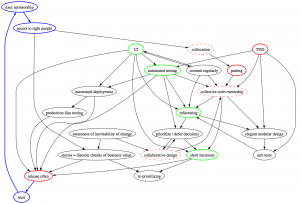The following article, written by myself and my colleague, Matt Simons, was published in the December 2010 issue of the Cutter IT Journal and is re-produced here with kind permission. It was also the subject of a talk we delivered in Santa Clara.
The landscape is changing
Since the dawn of the software era, systems have generally followed a lifecycle of develop/operate/replace. For the type of systems our company, ThoughtWorks, specializes in (typically built over the past 10-15 years), organizations expect as much as 5-10 years between significant investments in modernization. And some of the oldest core systems have now reached 40+ years – far longer than the average life-span of most companies today!
IT assets are relatively long-lived largely because modernization often represents a significant investment that doesn’t deliver new business value in a form that is very visible to managers or customers. Therefore organizations put off that investment until the case for change becomes overwhelming. Instead, they extend and modify their increasingly creaky platforms by adding features and making updates to (more or less) meet business needs.
For decades, this tension between investing in modernization versus making incremental enhancements has played out across technology-enabled businesses. Every year some companies take the plunge and modernize a core system or two, while others opt to put yet another layer of lipstick on the pig.
Continue reading “Dealing with creaky legacy platforms”

